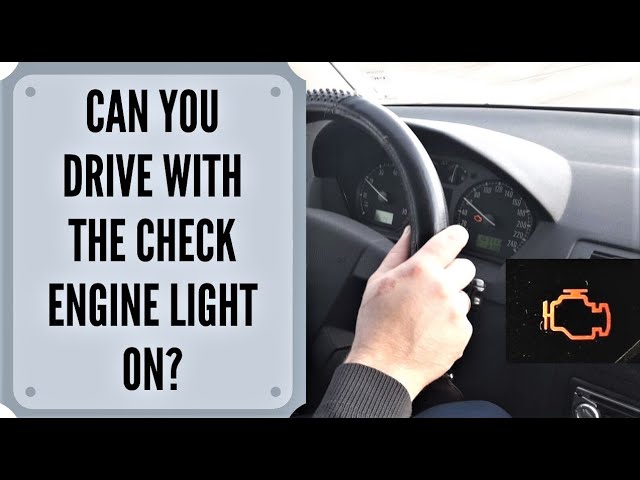- Can You Drive a Car with the Engine Light On?
- The Importance of the Engine Light
- Understanding the Types of Engine Lights
- Check Engine Light
- Solid vs. Flashing Engine Light
- Driving with the Engine Light On
- Can You Drive?
- Risks of Driving with the Engine Light On
- What to Do When the Engine Light Comes On
- Conclusion
Can You Drive a Car with the Engine Light On?
The Importance of the Engine Light
The engine light is a crucial warning system in your vehicle, indicating potential
problems with the engine or other essential components. Ignoring it can lead to severe
damage and costly repairs.
Understanding the Types of Engine Lights
Check Engine Light
The most common type of engine light, the check engine light, typically appears as an orange
or yellow light with the shape of an engine. It illuminates when the vehicle’s computer
detects an issue that could affect engine performance, fuel economy, or emissions.
Solid vs. Flashing Engine Light
A solid engine light usually indicates a less severe problem, such as a
loose gas cap or faulty sensor. In this case, it’s generally safe to continue driving while
monitoring the situation.
A flashing engine light, on the other hand, is a more serious warning. It
signifies a significant issue that requires immediate attention. Continued driving could
cause major engine damage.
Driving with the Engine Light On
Can You Drive?
Whether or not you can drive with the engine light on depends on the severity of the issue.
For a solid engine light, it may be possible to drive for a short distance to reach a mechanic.
However, it’s essential to proceed cautiously and avoid putting unnecessary stress on the
engine.
If the engine light is flashing, do not drive. Pull over immediately to a
safe location and call for roadside assistance.
Risks of Driving with the Engine Light On
- Further damage to the engine
- Increased fuel consumption
- Reduced engine performance
- Emissions violations
What to Do When the Engine Light Comes On
- Check your gas cap. A loose or improperly tightened gas cap can trigger the
check engine light. - Read the vehicle’s owner’s manual. It may provide specific guidance on the
meaning of the engine light and the appropriate course of action. - Use an OBD-II scanner. This diagnostic tool can be used to read the trouble
codes stored in the vehicle’s computer, providing more information about the cause of the
engine light. - Take your vehicle to a qualified mechanic. A mechanic can diagnose the issue
precisely and perform the necessary repairs.
Conclusion
Ignoring the engine light can have serious consequences for your vehicle and your safety. If the
engine light comes on, proceed cautiously and seek professional assistance promptly. By
understanding the importance of the engine light and taking appropriate action, you can avoid
costly repairs and ensure your vehicle’s continued performance.





